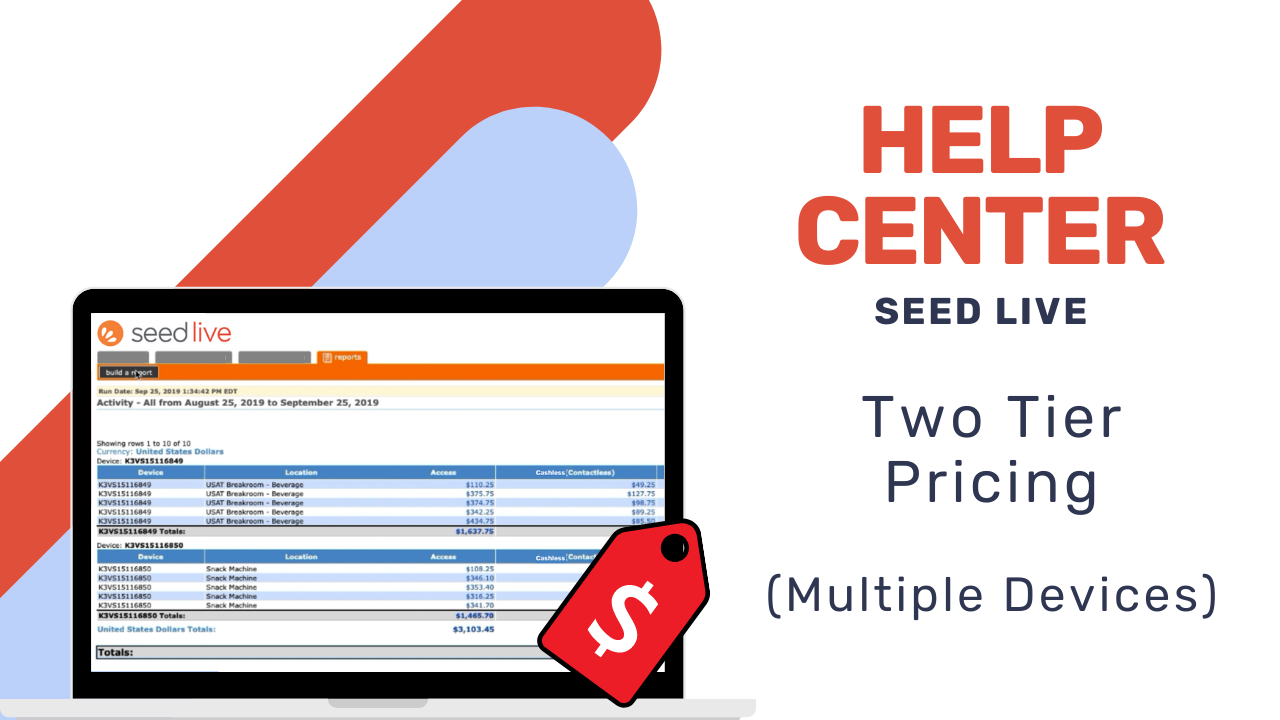As more and more consumers go cashless, having a card reader on your vending machine has become a no-brainer.
But while offering cashless payment options can increase your revenue, they also have their costs. One of the biggest card reader-related expenses for an operator? Card processing fees.
Every time your customers use a credit or debit card to pay for a product at your machine, you (as the machine owner) pay a percentage fee to process that payment. You may also have additional service fees from your card reader vendor.
Fortunately, there’s a way to offset these costs: two-tier pricing.
What is two-tier pricing?
Two-tier pricing allows an operator to set different prices on their product for cash payments versus cashless payments. Essentially, you’d charge more for a product in your vending machine if your customer pays with a card or mobile wallet.
The concept of two-tier pricing isn’t new. For instance, it’s common to see cash discounts at gas stations. When you pay for gas at the pump with your card, the cost is higher than if you were to go inside and pay with cash.
Fast Facts
- Two-tier pricing sets different prices for cash versus cashless payments.
- It helps operators cover card processing fees and can boost profits.
- Businesses use this strategy to manage extra costs from card transactions.
- Offering cash discounts can encourage more cash payments, saving on fees.
What are the benefits of two-tier pricing?
Two-tier pricing can help operators save money on fees and increase profits.
Imagine one of your vending machines sees $2,500 a year in credit/debit transactions and averages $1 per transaction with a 6% processing fee. If you added a 10 cent “fee” for card transactions, you’d generate $250 a year in profit. This extra $250 not only covers those card processing fees, but also most of your monthly service fees.
Bottom line: having two-tier pricing means you’ve paid for the cost of your card reader, and then some.
Should I add two-tier pricing to my vending machines?
If you’re still concerned about increasing prices on the products in your vending machines, don’t be. Your customers are less price-sensitive than you think. A study by Cantaloupe found that increased prices on products in vending machines didn’t result in a significant reduction in the number of sales at those machines.
Additionally, operators who’ve implemented two-tier pricing on their own vending machines haven’t received any customer pushback.
“When you’re paying with a card, you don’t really think about an extra 10 cents. Even with us being new to [two-tier pricing], we haven’t gotten a single call or complaint. It’s everywhere…everybody’s used to it now,” according to Kyle Murphy, corporate business development director for Buffalo Rock’s on premise department.
At this point, consumers are familiar with the concept of two-tier pricing. Which makes it easier for them to accept the extra cost associated with card payments. In fact, they may not even notice or care.
Tim McAra, Senior VP of Refreshment Services at Continental Services, agrees. “If you go to a 7/11 convenience store, grab your 20oz. drink out of the cooler, and pay for it — you don’t really think about what it costs. We are trying to make that same experience for our [customers], so building in two-tier pricing is normal. And nobody really pays that close attention to the difference in price because, as consumers, we’re just conditioned to not think about it.”
How do I implement two-tier pricing?
When you add two-tier pricing into your vending machines, it’s important to frame it correctly for your customers.
Legally, you can only offer a discount for cash purchases, and can’t position the higher credit/debit price as an additional fee. Additionally, you need to communicate on the machine itself that there is a cash discount and how much that discount is. Often, your card reader vendor will provide stickers that make this very clear.
As for setting up two-tier pricing on one or more of your vending machines, the process depends on your card reader vendor. For Cantaloupe customers, it’s relatively simple to set up two-tier pricing in Seed Live. Watch our video tutorial here:
